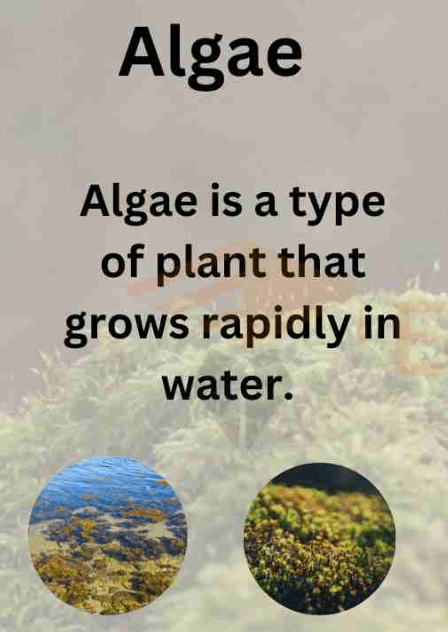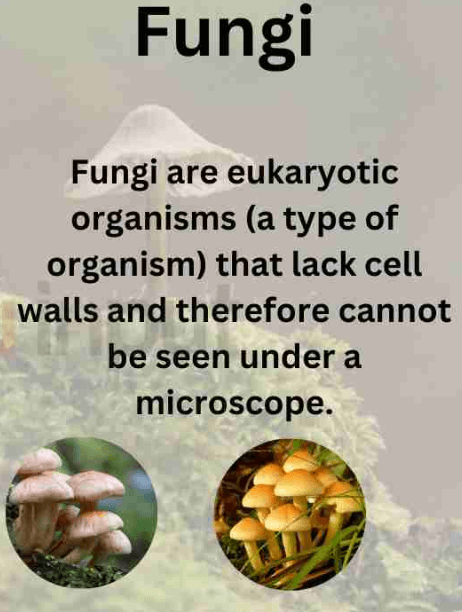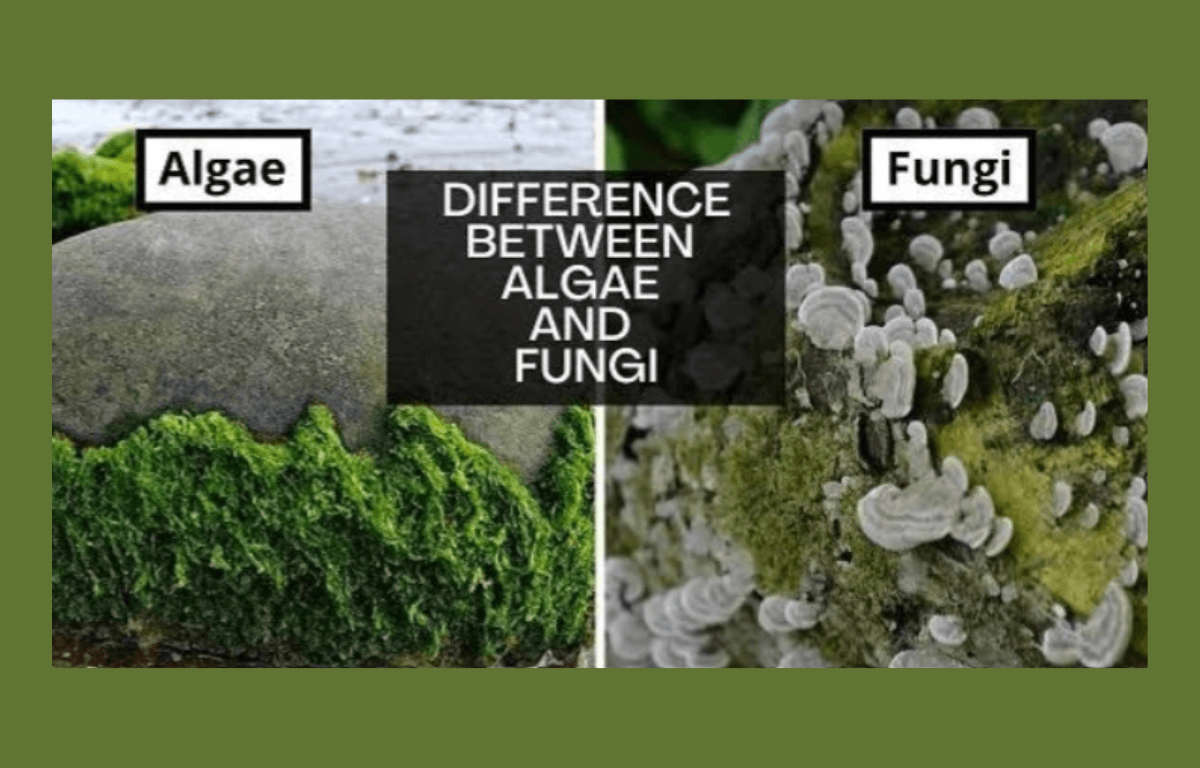Both algae and fungi belong to distinct biological kingdoms. Algae, primarily plant-like, thrive in aquatic environments, harnessing sunlight for energy through photosynthesis. Fungi, a separate kingdom, include diverse organisms like mushrooms and molds. They absorb nutrients through external digestion. Despite their differences, both play crucial roles in ecosystems, contributing to biodiversity and ecological balance within their respective kingdoms. Here we have discussed a few more details related to Difference between Algae and Fungi.
Algae and Fungi
Algae and Fungi are both diverse groups of organisms, but they differ in fundamental ways. Algae are primarily photosynthetic, using chlorophyll to produce energy from sunlight, while fungi are heterotrophic, obtaining nutrients through absorption. Additionally, algae can be unicellular and are often found in aquatic environments, whereas fungi are typically multicellular and thrive in diverse habitats, including soil and decaying matter.
Define Algae
Algae are simple, plant-like organisms that can be found in various aquatic environments, such as oceans, lakes, and ponds. Unlike higher plants, algae lack true roots, stems, and leaves. They come in many shapes and sizes, ranging from tiny single-celled organisms to large multicellular structures. Algae can be green, brown, red, or even golden in color, depending on the pigments they contain.

These organisms play a crucial role in the ecosystem as they produce oxygen through photosynthesis, a process where they convert sunlight, carbon dioxide, and water into energy and oxygen. Algae serve as a primary food source for many aquatic animals, including small fish and invertebrates. Some types of algae are also used by humans in various ways, such as in food supplements, cosmetics, and even biofuels. In summary, algae are simple aquatic organisms that come in various shapes and sizes, providing oxygen, food, and other essential elements for life in aquatic ecosystems.
Define Fungi
Fungi are a diverse group of organisms that play crucial roles in ecosystems. Unlike plants, they don’t make their own food through photosynthesis. Instead, fungi absorb nutrients from their surroundings, decomposing organic matter. The most familiar fungi are mushrooms, but they also include molds and yeasts. Fungi have essential ecological functions, breaking down dead organisms and recycling nutrients. Some form symbiotic relationships with plants, aiding in nutrient absorption. While some fungi can cause diseases in humans, many are beneficial and used in medicine, food production, and industry. Overall, fungi contribute significantly to the balance of nature and have practical applications in various aspects of human life.

Difference Between Algae and Fungi
Here we have distinguished between Algae and Fungi in the table below:
| Difference Between Algae and Fungi | ||
| Feature | Algae | Fungi |
| Kingdom Classification | Algae belong to the Kingdom Plantae, primarily in the Protista subkingdom. | Fungi belong to the kingdom of fungi. |
| Cell Wall Composition | Algae have cell walls made of cellulose. | Fungi have cell walls made of chitin. |
| Nutritional Mode | Algae are primarily autotrophic, capable of photosynthesis to produce their own food. | Fungi are heterotrophic, relying on external sources for nutrients and absorbing them. |
| Mobility | Algae can be motile during certain life stages, using structures like flagella. | Fungi are generally non-motile. |
| Reproduction | Algae reproduce through various methods, including spore formation and fragmentation. | Fungi reproduce through both sexual and asexual means, often involving the production of spores. |
| Habitat | Algae are found in diverse environments, including aquatic habitats, moist surfaces, and symbiotic relationships with other organisms. | Fungi thrive in terrestrial environments, decomposing organic matter, and forming mycorrhizal associations. |
| Structure | Algae can have a simple unicellular structure or form complex multicellular organisms. | Fungi typically exist as multicellular structures, forming hyphae that make up the mycelium. |
| Photosynthetic Pigments | Algae contain various pigments for photosynthesis, such as chlorophyll, carotenoids, and phycobilins. | Fungi lack chlorophyll and do not engage in photosynthesis. |
| Ecological Role | Algae contribute to oxygen production and are essential in aquatic food chains. | Fungi play a crucial role in nutrient cycling through decomposition and form mutualistic relationships with plants. |
| Economic Importance | Algae are used in various industries, including food, pharmaceuticals, and biofuel production. | Fungi have applications in medicine (e.g., antibiotics), food production (e.g., yeast in baking), and biotechnology. |
Importance of Algae and Fungi
Algae play a crucial role in ecosystems as a primary producer, producing oxygen through photosynthesis and serving as a foundation for aquatic food chains. Fungi contribute to nutrient cycling and decomposition, breaking down organic matter and facilitating nutrient absorption for plants. Both algae and fungi have applications in various industries, including medicine, food production, and environmental remediation.
Importance of Algae
- Oxygen Production: Algae play a crucial role in oxygen production through photosynthesis, contributing a significant portion of the Earth’s oxygen.
- Carbon Dioxide Absorption: They absorb carbon dioxide, helping to regulate atmospheric CO2 levels and mitigate the impact of climate change.
- Food Source: Algae are a vital component of aquatic Food Chains, serving as primary food sources for various marine organisms.
- Biological Indicators: Certain types of algae are used as biological indicators of water quality, reflecting environmental conditions.
- Biotechnology: Algae have potential applications in biofuel production, pharmaceuticals, and other biotechnological processes.
Importance of Fungi
- Decomposition: Fungi are primary decomposers, breaking down organic matter and recycling nutrients in ecosystems.
- Symbiotic Relationships: Many plants form symbiotic relationships with fungi (mycorrhizae), enhancing nutrient absorption and plant growth.
- Food Production: Certain fungi, like mushrooms, are important in the culinary world and contribute to human nutrition.
- Medicinal Uses: Certain Fungi produce compounds with medicinal properties, contributing to the development of antibiotics and other pharmaceuticals.
- Bioremediation: Fungi can be used in bioremediation to clean up environmental pollutants and contaminants.



 50 Vegetables Name for Kids in English a...
50 Vegetables Name for Kids in English a...
 Food Chain: Definition, Types, Examples,...
Food Chain: Definition, Types, Examples,...
 Human Respiratory System: Definition, Di...
Human Respiratory System: Definition, Di...













